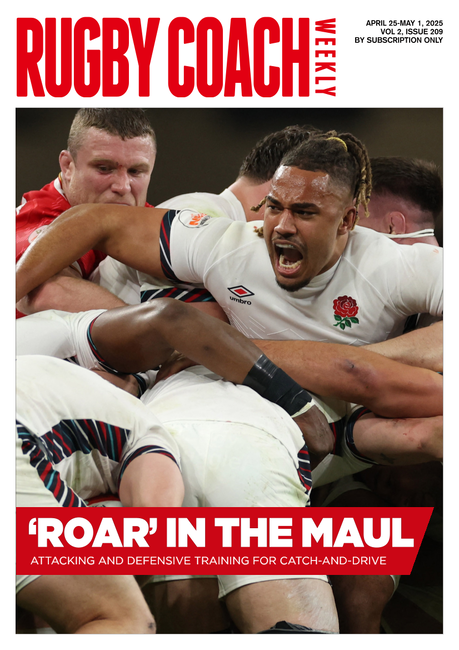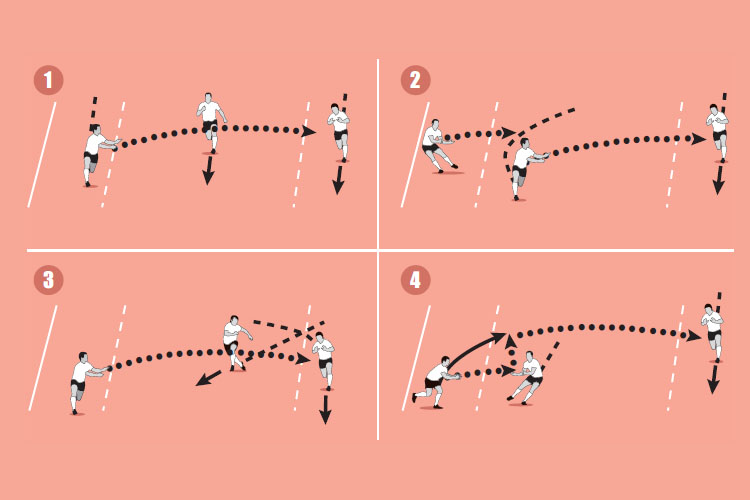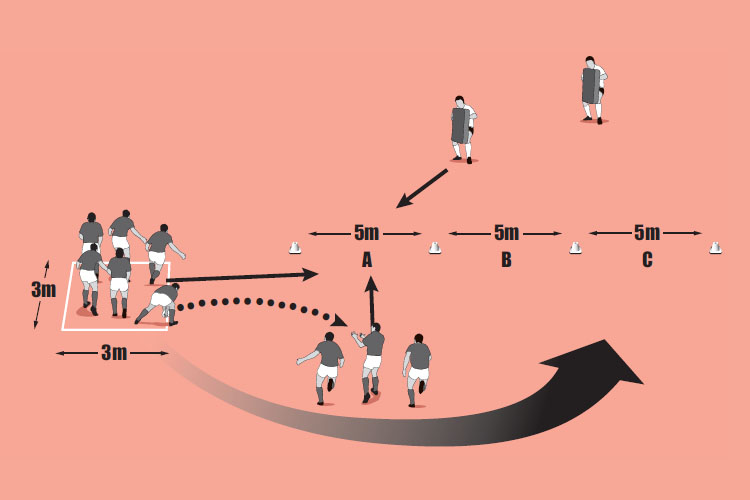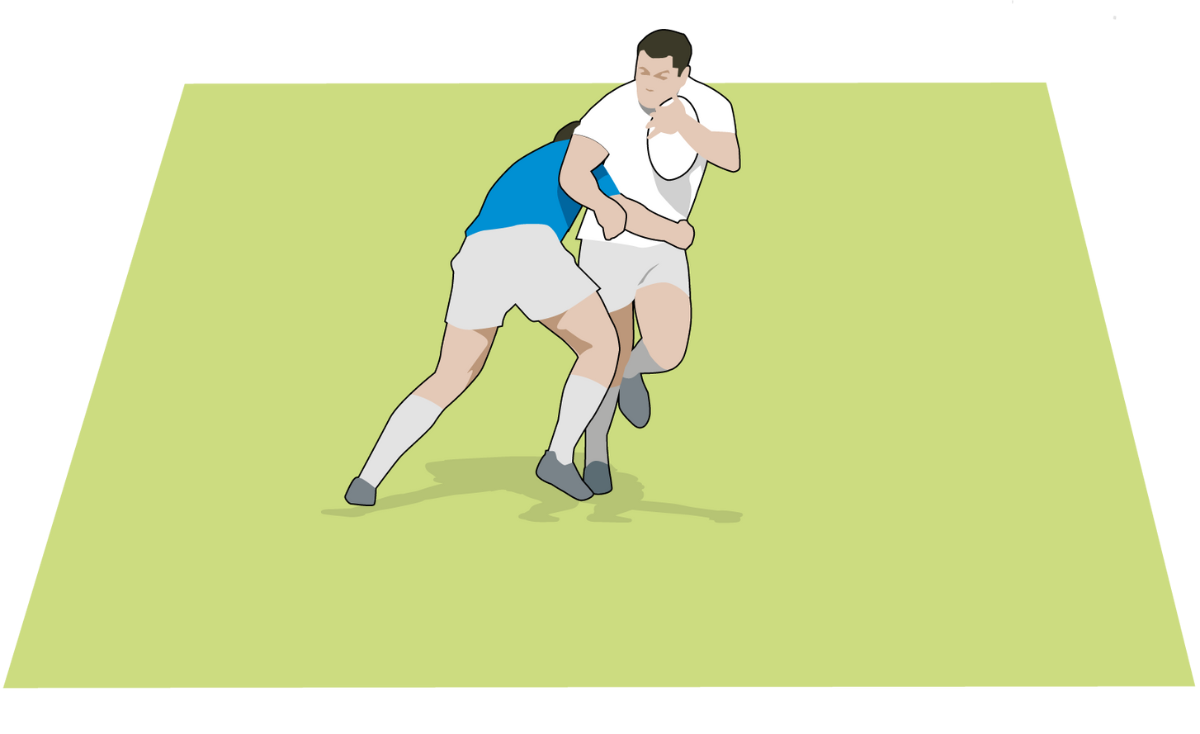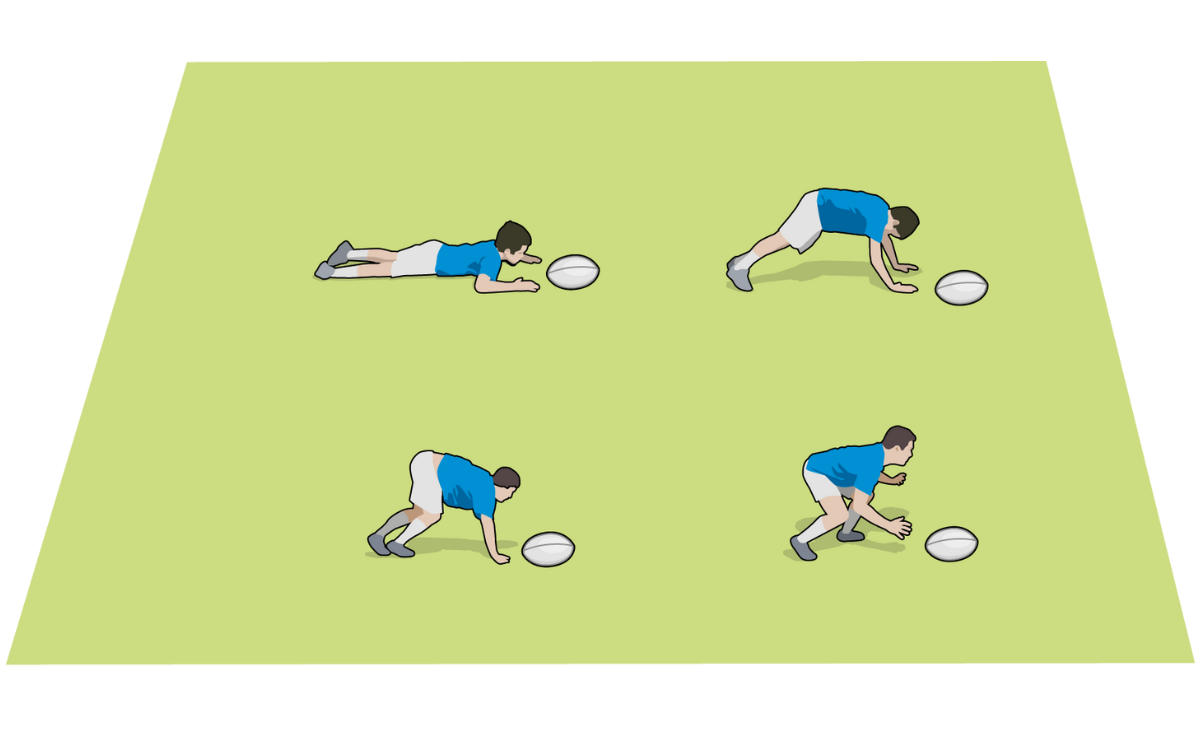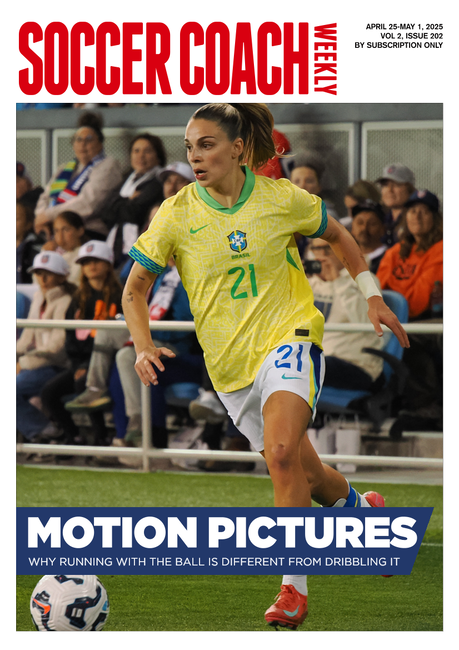Defending the 2 v 1
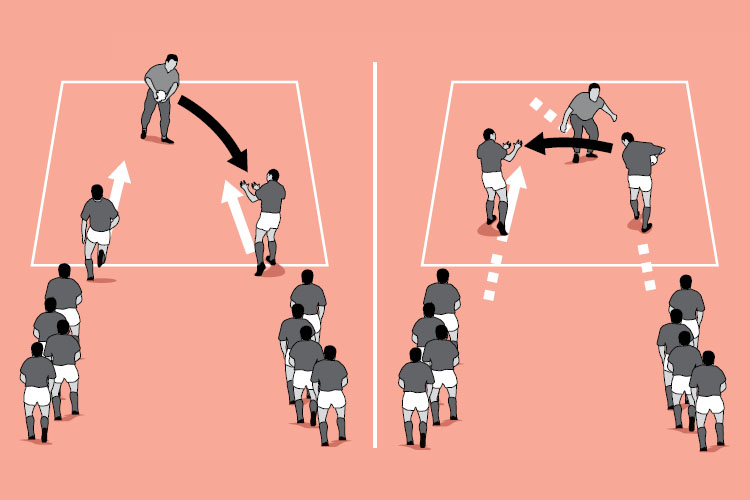
This session places more emphasis on the role of the defender than a standard 2 v 1 session, which tends to focus on the attackers. If the defender “cares” about stopping the 2 v 1, he can make it very difficult for the ball carrier to release the support player. This, in turn, ups the pressure on the 2 v 1, leading to better outcomes.
Warm up time: 7-10
Session time: 10-15
Development time: 10-15
Game time: 15-20
Warm down time: 7-10
What to think about
What is the role of the support player? First, he needs to hold his run, not creep up as the ball carrier moves forward. Second, because he has held his run, he must attack the space in front of him at pace. This will reduce the chances of the defender shifting over once the ball has been passed. What options has the defender got? He can go for the ball carrier quickly, rushing the ball carrier’s pass. He can get in between the two players and then close down the ball carrier. He could fake a run at the support player and then turn at the last moment to tackle the ball carrier.set-up
- Attackers: draw the defender by using changes of angle. Then pass to the player in space. Read the defender’s movements before passing and running.
- Defenders: don’t just go for the ball carrier, vary your approaches to the situation.
What you get your players to do
Split your team in groups of ten, with 5 pairs in each group. You stand in the middle of a box. The first pair line up opposite you and you throw a ball to either one of the players. They then have to beat you. You look to pressurise in different ways as they improve. For instance: hold your space, attack the ball carrier, fake and step in, shepherding. You work through each pair and then vary the types of pass they receive. For instance: on the ground, high balls, passes to the gut.Thank you for reading
to enjoy 3 free articles,
our weekly newsletter, and a free coaching e-book
Or if you are already a subscriber, login for full access
Newsletter Sign Up
Coaches Testimonials

Gerald Kearney, Downtown Las Vegas Soccer Club

Paul Butler, Florida, USA

Rick Shields, Springboro, USA

Tony Green, Pierrefonds Titans, Quebec, Canada
Subscribe Today
Be a more effective, more successful rugby coach
In a recent survey 89% of subscribers said Rugby Coach Weekly makes them more confident, 91% said Rugby Coach Weekly makes them a more effective coach and 93% said Rugby Coach Weekly makes them more inspired.
Get Weekly Inspiration
All the latest techniques and approaches
Rugby Coach Weekly offers proven and easy to use rugby drills, coaching sessions, practice plans, small-sided games, warm-ups, training tips and advice.
We've been at the cutting edge of rugby coaching since we launched in 2005, creating resources for the grassroots youth coach, following best practice from around the world and insights from the professional game.


